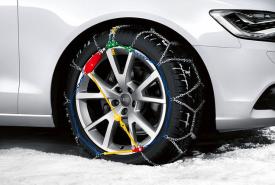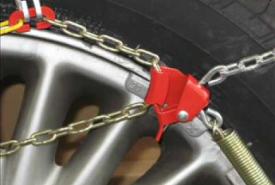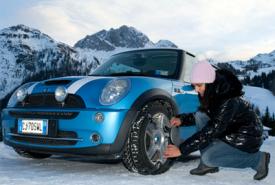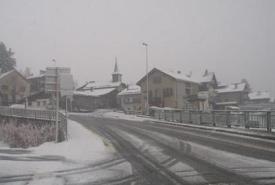Are you struggling to put snow chains on your tires? Let us show you how!
Some motorists may not be familiar with them, but tire chains for snowy, icy, or steep roads are common in many mountainous areas, and sometimes obligatory.
Even drivers familiar with snowy or icy conditions sometimes use chains to maintain safe control on mountain roads: it may be the only way to keep yourself moving.
Putting snow chains on your vehicle is not the easiest thing to do, but once you've done it for the first time, the mystery will be gone & you'll be able to bore everybody down the pub with your new-found skill.
The chain packaging will state which tires it fits, and don't be afraid to ask for advice in the shop. Never attempt to use chains that are too large or too small, as this could result in dangerous driving and damage to your car.
- Install your chains & test them on a snowy or slippery road before you really need them.
Pick an open stretch of road, or an empty car park. Take the chains out, and untangle them so that they are hanging free, in a "web" shape.
Place the separated chains by the tires: for a front-wheel-drive vehicle, the chains should go on the front two tires, and for rear-wheel-drive vehicles, on the rear two wheels.
If you don't know if your car is front or rear-wheel drive, look & see which wheels are spinning when your vehicle is stuck in the mud or snow (although it may already be too late for your new chains!).
How to fit the snow chains
With the car's parking brake on and the car in gear, simply place the chain over the tire, holding it at the top and letting it fall down evenly over the front of the tire & wheel. Obviously, the bottom of the chain can't cover the part of the tire that's touching the road: just do what you can.
Some chains have rings that go on the inside of the wheel, to help guide the chains into place. For these ring-type chains, be sure the open connection is at the bottom of the wheel.
Once you put these chains on with the ring around the inside of the wheel, you can connect the bottom of the ring. Usually you'll need to grope around under the car by the tire.
Once the first chain is evenly and securely on the three-quarters of the wheel not touching the road, put the other chain on the other tire.
When both chains are on, drive forward less than a meter to expose the part of the tire previously touching the ground. Put the brake on again, and finish securing both chains. Tighten the chains, by using a closer link where they close.
Drive 20-30 meters, then get out and re-tighten the chains, which will have slackened off as they find their place on the tires. Don't be alarmed by the bumpy ride, this is normal. If this is a practice run on a dry road, don't drive too far or fast.
Taking chains off is much easier. Disconnect the inside, but note that you can't then simply pull them off: the tire will still be sitting on them.
Just lay the chains down on the road as flat as possible then drive forward a meter until the tires are off the chains. Put the chains back in a bag, making sure they are not tangled together and that they are as dry as possible.
One reason it's good to practice putting on chains is that no doubt when you need them, the conditions outside will be terrible, snowing hard & blowing a gale.
Don’t wear your expensive ski-gear when putting on chains, unless you want to go up the hill covered in oil. Have some heavy waterproofs in the car, remember you'll be kneeling down in the slush. Try to have a pair of gloves handy, waterproof garden gloves are a good choice.
If none of this appeals to you, take some local advice about the best type of car for the mountains, and buy some good snow tires!












